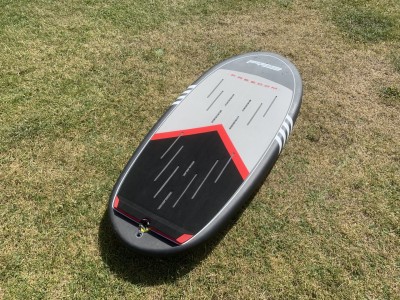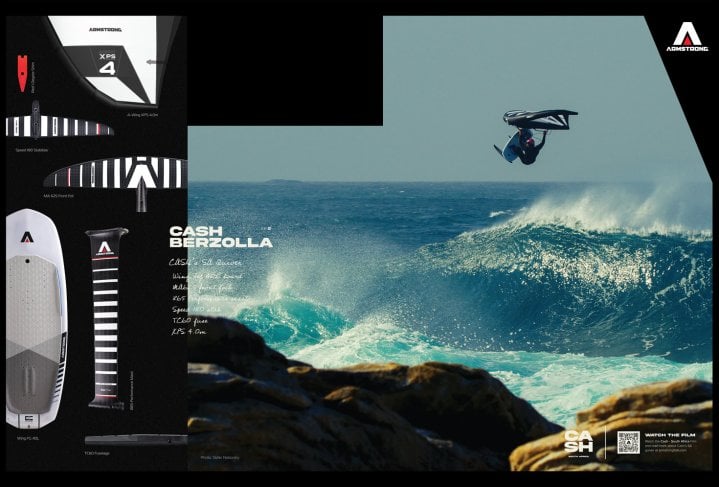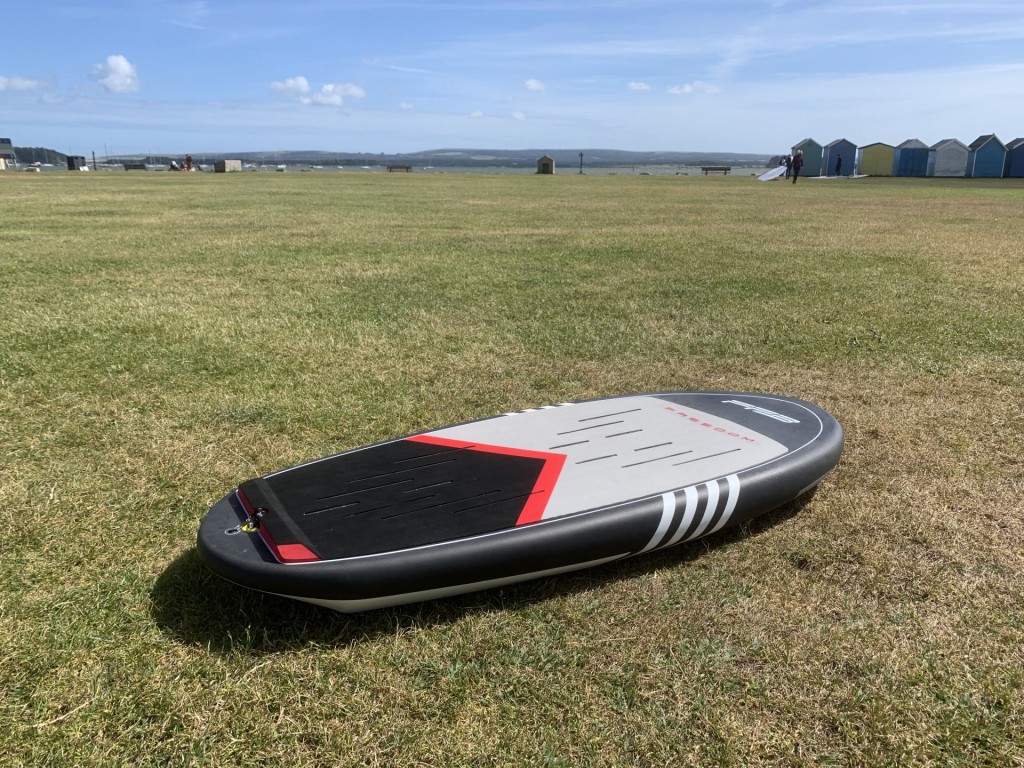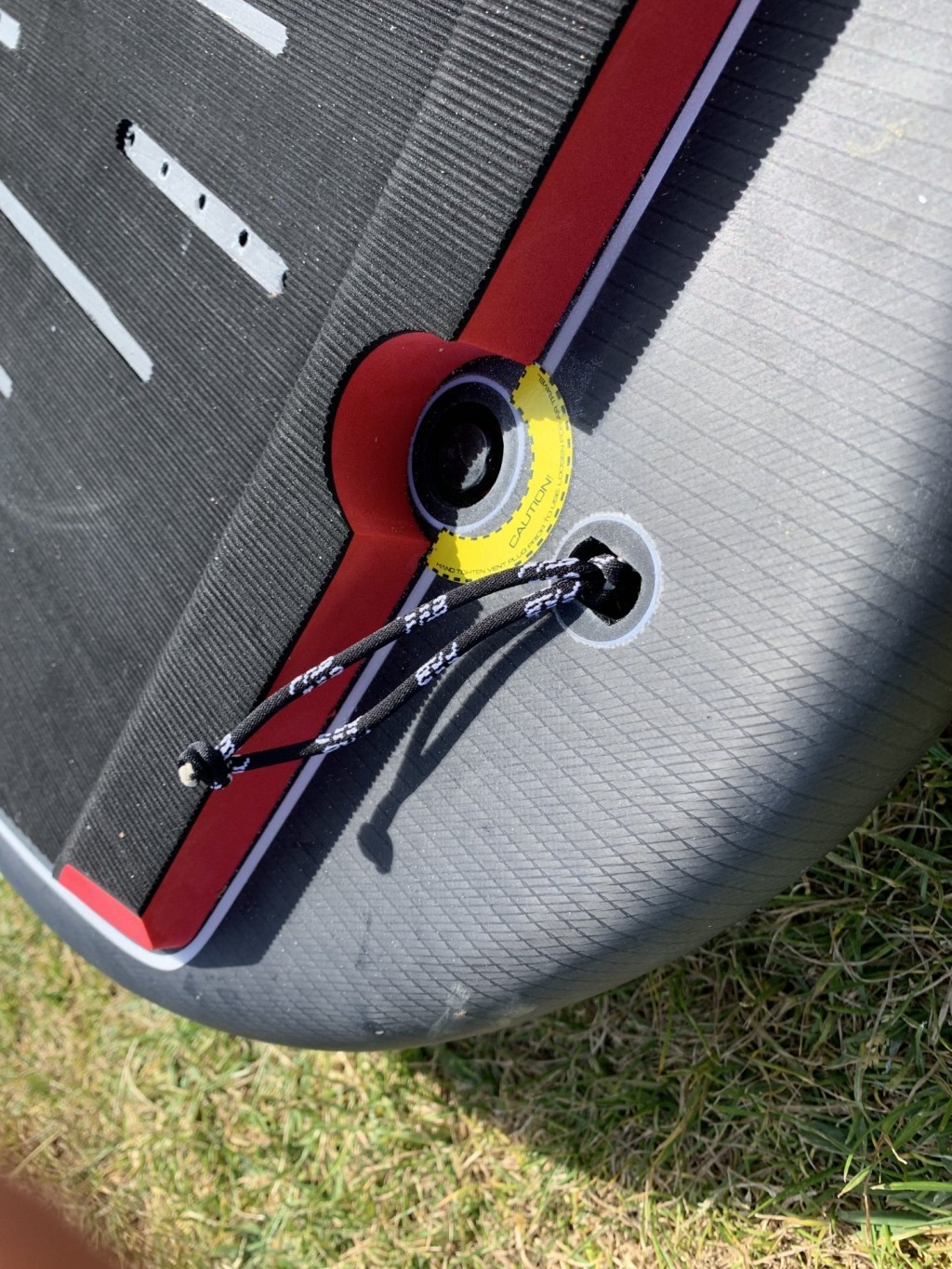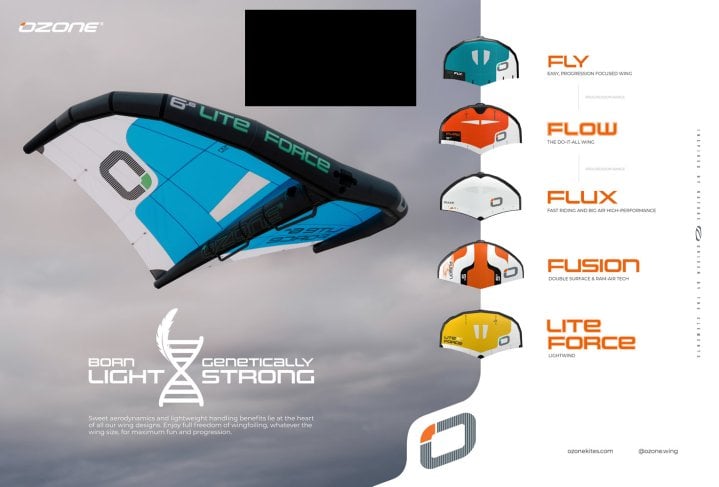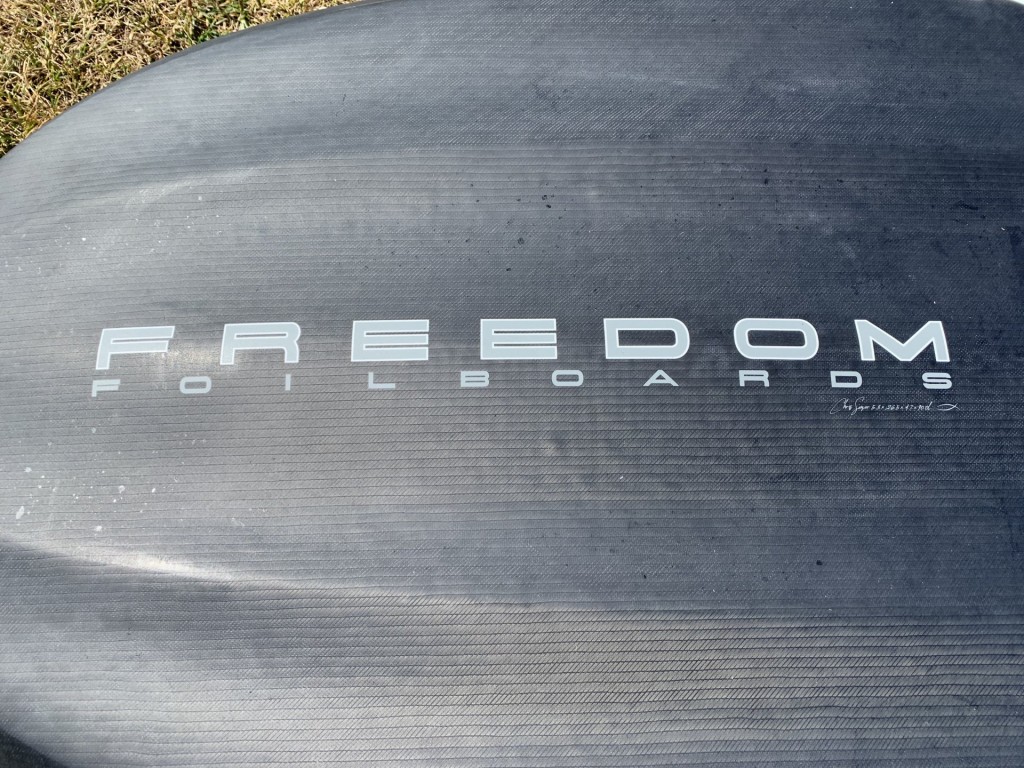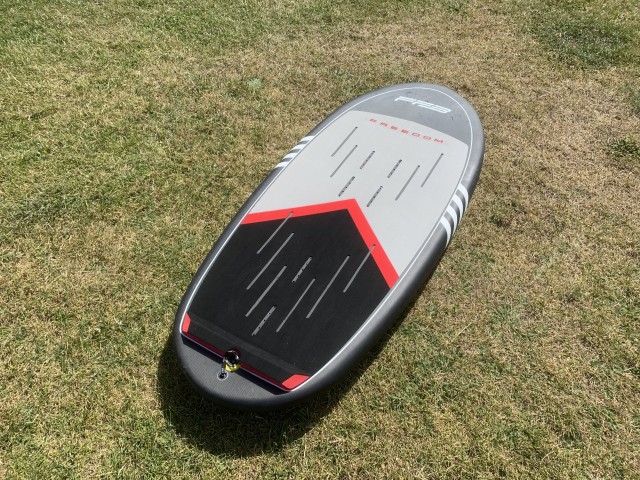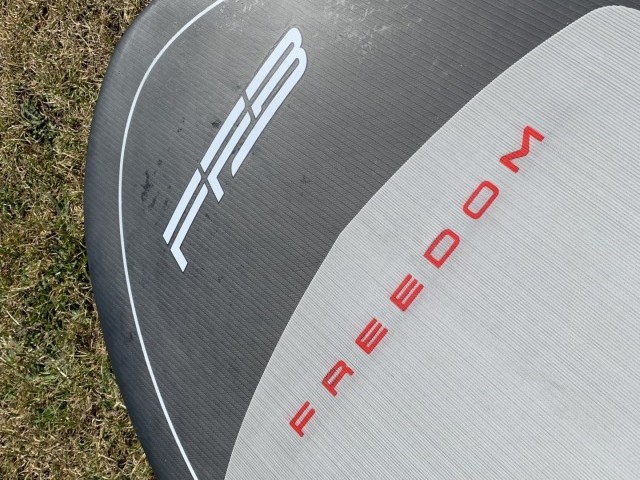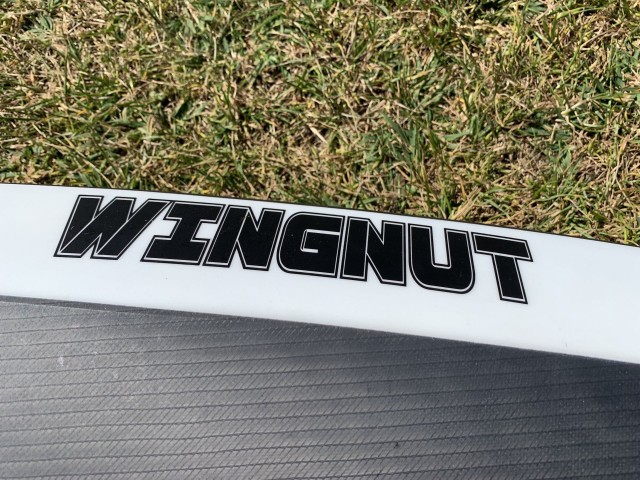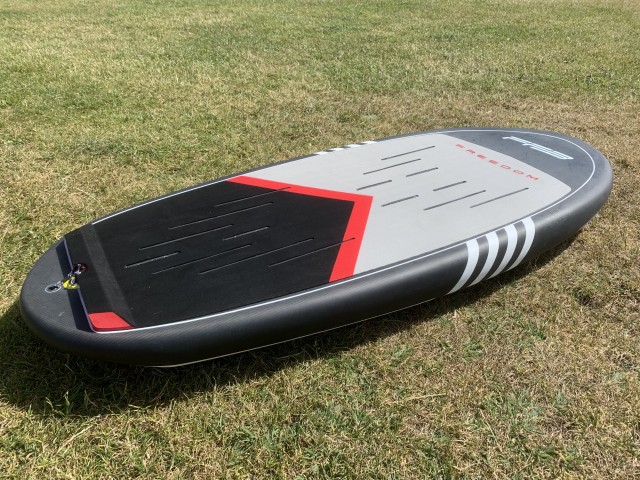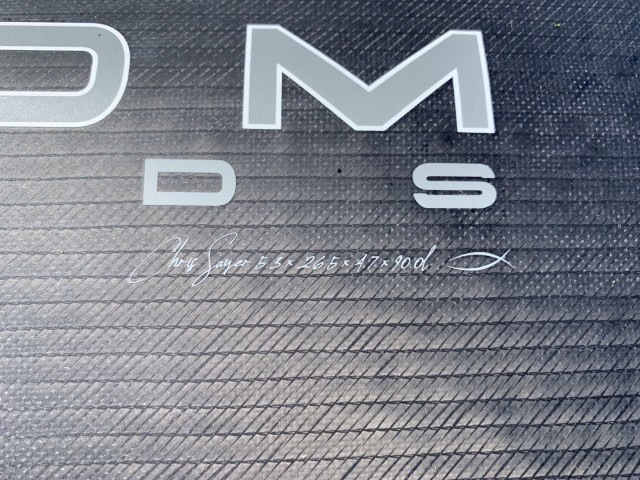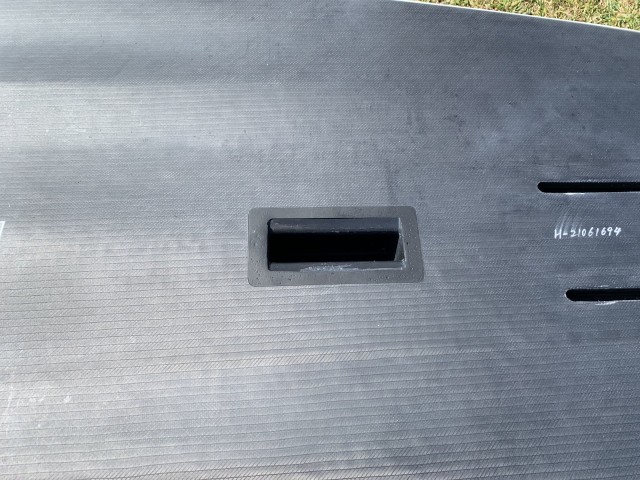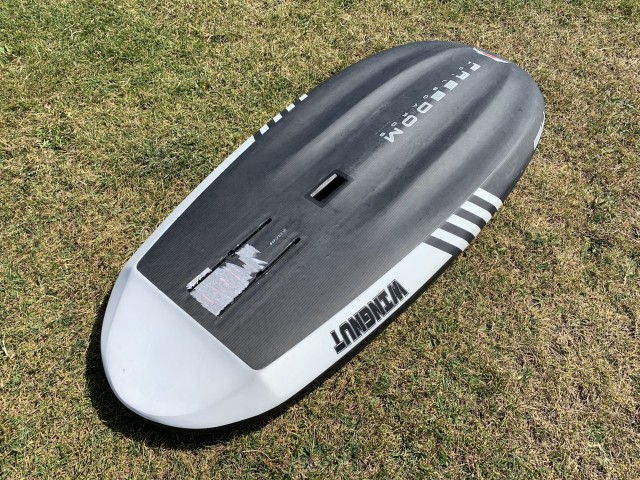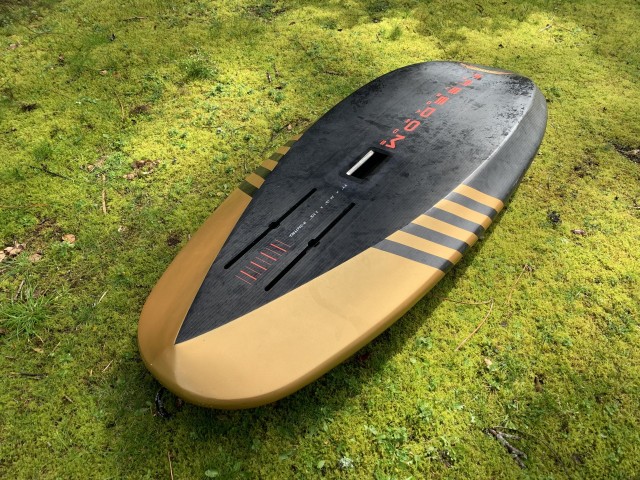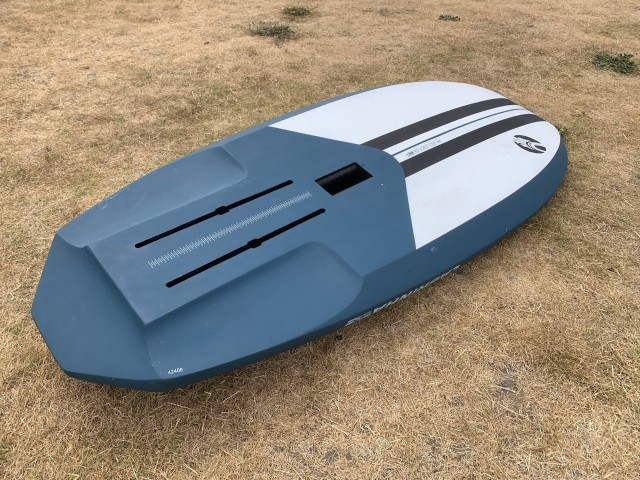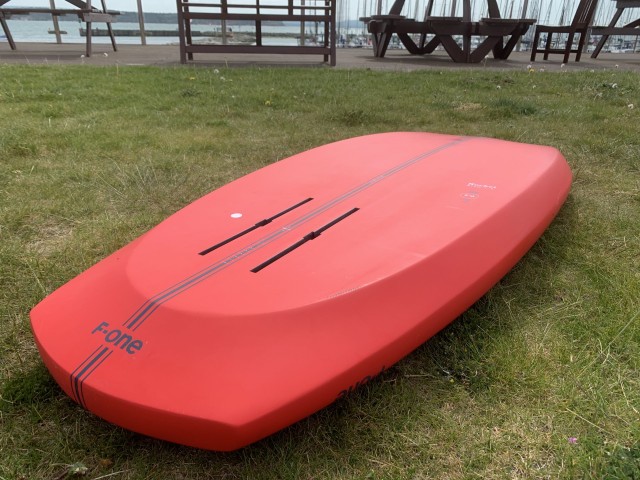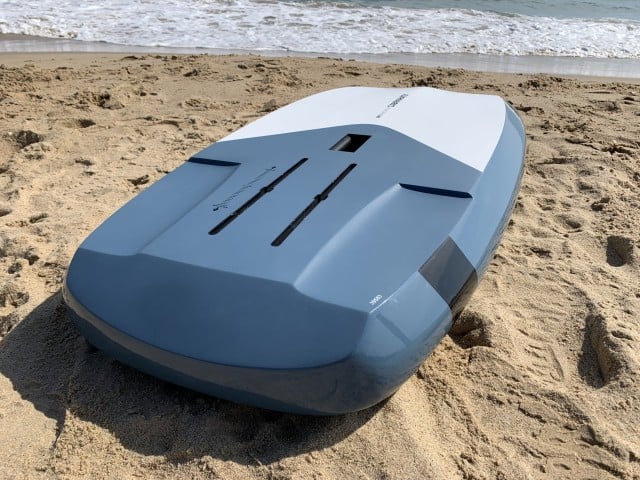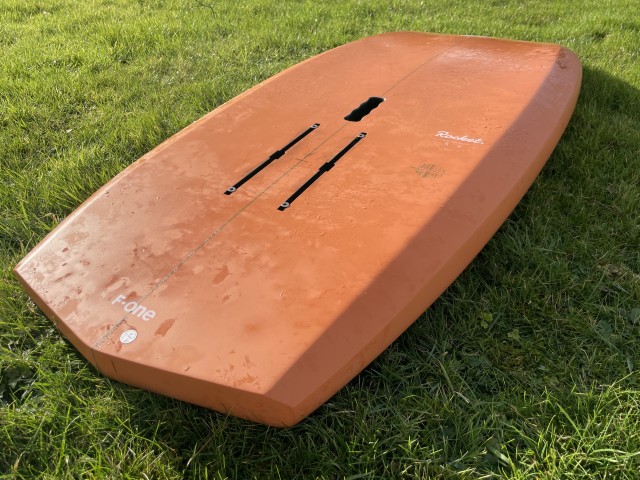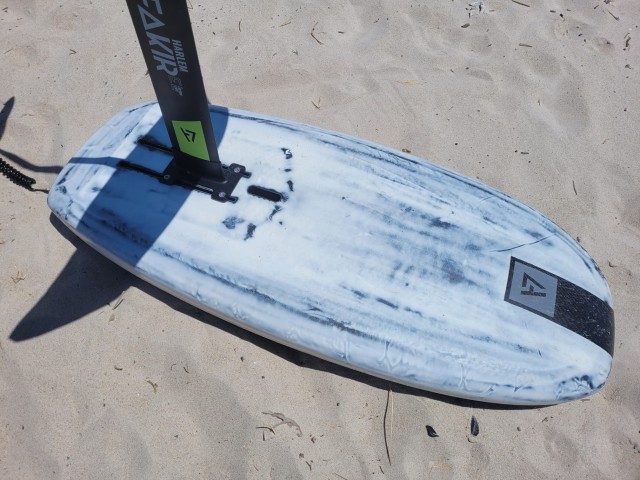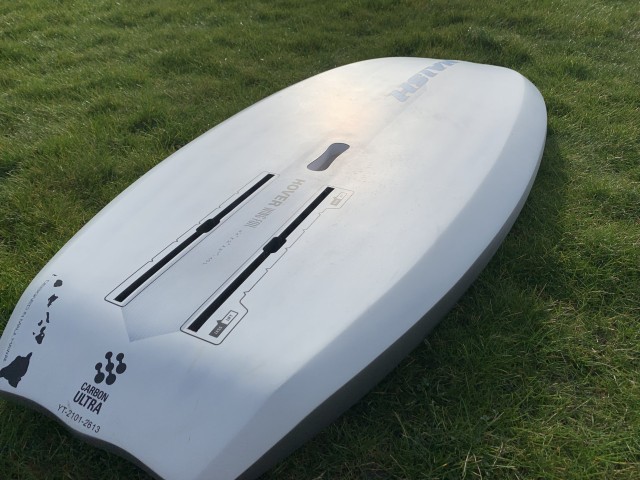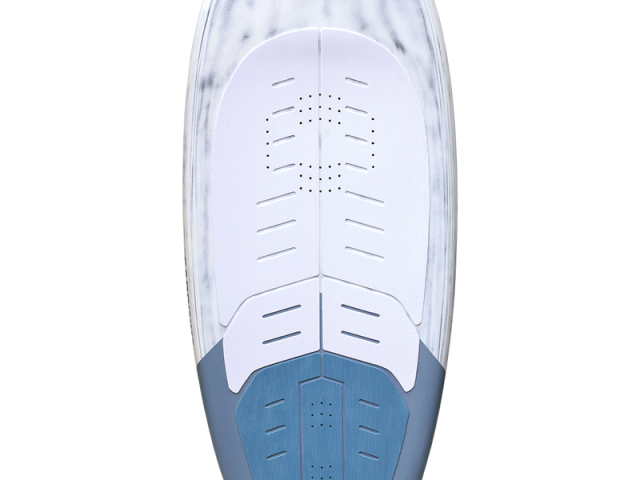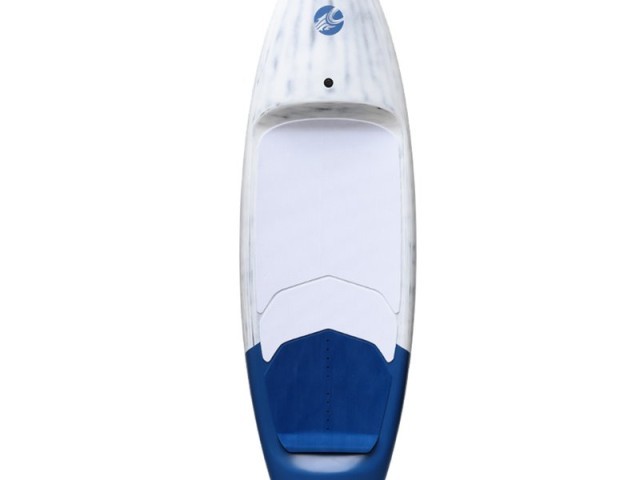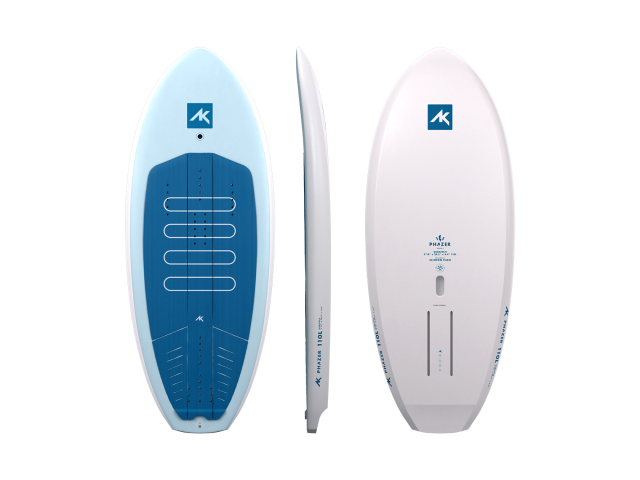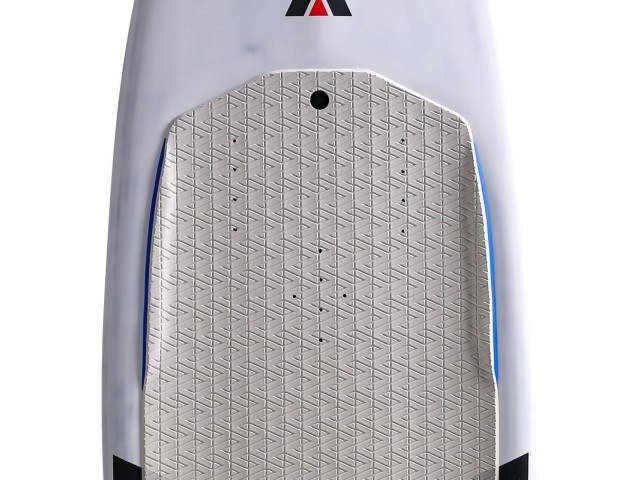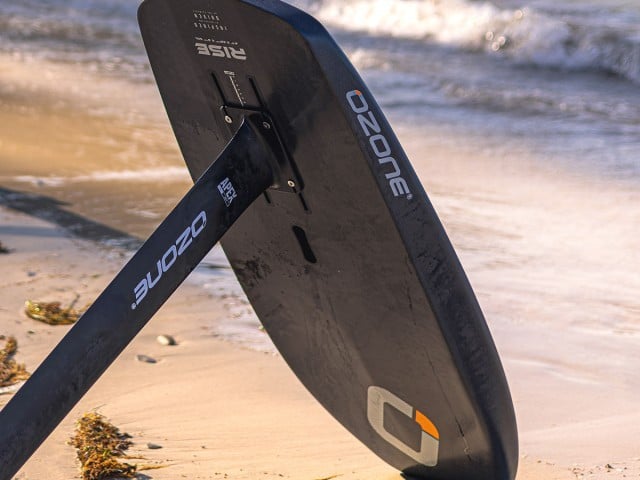At A Glance
On test this issue is the Wingnut, FFB’s latest offering to the market, and it’s a well-thought-out product. Freedom has taken their knowledge in prone foiling board design and applied it to winging, with great success. The Wingnut has a quad concave channel, volume up front, a step tail, and many other features. The board on test here is the 90L, 5’3, & 26.5 inches wide.
Out of the box, the board clearly maintains FFB’s unique & striking design. It feels really light for its size and has a stylish carbon look to compliment the bold FFB logo. The Wingnut is built using an EPS lightweight stringer-less core, wrapped in S glass for impact resistance & then again in ‘Carbon Double Bias’, a high-grade woven carbon with extra fibres running in the longitudinal axis.
This is without doubt a high-quality carbon board, with that in mind, I’m a big fan of the price point. It’s definitely on the more affordable side of the scale, sometimes saving you over £500 when compared with similar boards. I feel that’s pretty important with many of us being so strapped for cash lately.
On The Water
I was excited to get on the water and try out the Wingnut. I tested it during the height of summer here in the UK, so light sea breezes, sunshine, and short wetsuits were the order of the day. A welcome change after a cold winter.
The Wingnut was the ideal board for the light wind conditions I mainly tested in. The quad concave channel I mentioned above helps the board release from the water, the four channels rather than two just account for the wider board, and it does it well. FFB has put the volume up front on the Wingnut, with the tail tapering in. I found this helps with stability and particularly take-offs when dropping down bumps or small waves.
The step tail, a regular feature in most brands' designs these days, does the job effectively. I enjoyed pumping and riding bumps on the way downwind, and despite its volume I thought it pumped well. At 5’3, it means that the nose and tail don’t touch down when you pump, unlike longer boards with similar volume.
A particularly unique feature is the leash plug on the underside of the board. Designed to keep ankle leashes from wrapping around your feet, I found it made a big difference, especially when gybing and swapping my feet. At this point, I’m unsure whether I noticed any extra drag when getting up on foil, but I suppose that is possible.
The deck pad felt super comfy, and although I didn’t use them, the board does feature foot strap inserts for those wishing to get some air. Finally, the handle on the bottom of the board is super handy for carrying all your gear once rigged and heading to sea. The Wingnut comes in 4 sizes, 50L, 65L, 90L (on test), and 120L, providing a wide variety of choices.
Overall
The 90L Wingnut is an absolute joy to ride. Not only will this be a great option for lighter people that are learning, it’s also an awesome board for the heavier rider looking to drop a size and advance their skills. At a reasonable price board and an aesthetic design, what’s not to like? I had a blast cruising around on the Wingnut and I have no doubt you will too. FFB have used their knowledge and experience to create an excellent board.
Read our interview with Chris Sayer, their founder, in this issue to find out more about the brand.
Videos
This review was in Issue 13 of Tonic Mag.
For more information visit Freedom Foil BoardsRelated
By Jack Galloway


